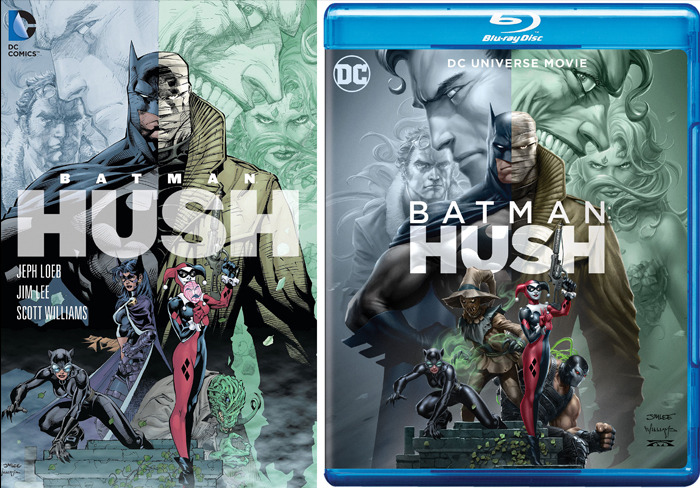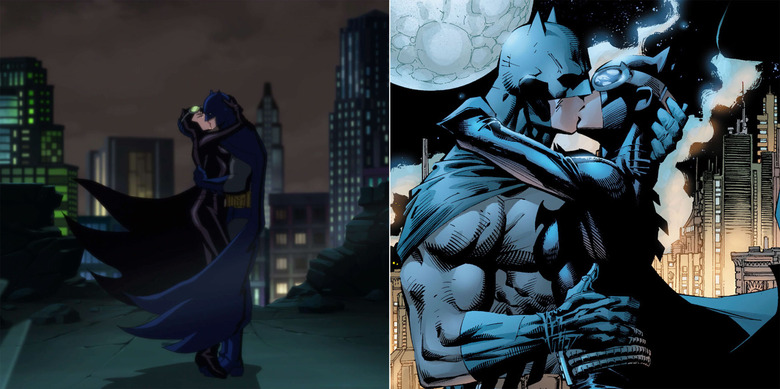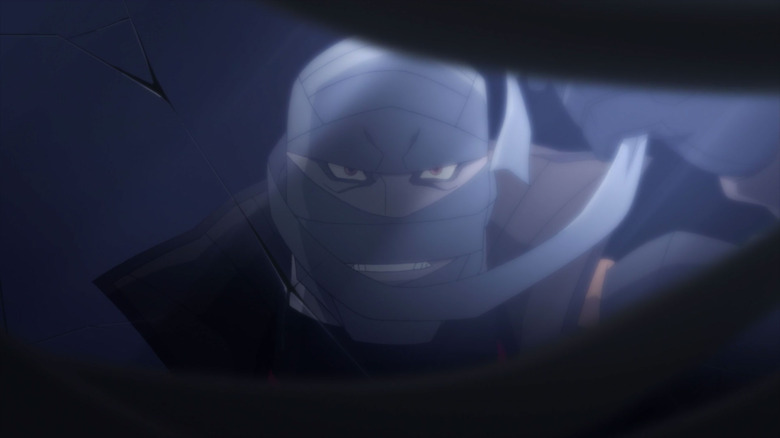'Batman: Hush' Review: A Classic Tale Of Obsession, Improved By A Few Key Changes
"Deep down, he's a good person, and deep down, I'm not," Batman says as he's about to fight his brainwashed pal Superman in the latest DC Animated Movie Universe release, Batman: Hush. There might not be a single line that better captures Batman's simultaneously toxic self-loathing and self-mythologizing quite so succinctly in relation to his most hopeful (and much more socially-adjusted) friend and thematic foil.It's also such a casually badass Batman line that I couldn't imagine a movie adaptation of the classic Batman: Hush comic, which was written by Jeph Loeb and illustrated by Jim Lee, without it. The new film, directed by Justin Copeland from an adapted screenplay by Ernie Altbacker, is full of savvy pulls like this one and cuts alike, slimming a sprawling 12-part saga into a lean 80-minute feature. They preserve nearly all the key themes of the originally printed murder-mystery while making changes big and small along the way. (Small change: Batman wears a pair of kryptonite brass knuckles instead of a single kryptonite ring to fight Supes). Some of the biggest changes in the film's ending even recontextualize Batman and Catwoman's final moments of the story, but the film holds together fabulously nonetheless. Let's talk about why.
The Batman: Hush Comic is a Bona Fide Classic
To understand Hush, you have to understand the comic book story arc of the same name, which ran from December 2002 through November 2003. Following a string of several years of continuity-laden major crossovers — Knightfall followed by Contagion, Legacy, and Cataclysm, followed by No Man's Land, followed by Bruce Wayne: Murderer? and Bruce Wayne: Fugitive? — Hush served as an accessible reintroduction to the comic version of The Dark Knight. It told a finite story over 12 months in consecutive issues of the main Batman series, meaning it didn't require much effort to follow. Along the way, it introduced a dangerous new villain, gave all the core members of the Batman's supporting cast a role to play, and pinned much of its tension around Batman and Catwoman's hot-and-cold romance and his other relationships.It was also beautifully constructed. The series came from the superstar creative team of Jeph Loeb and Jim Lee, two men known, respectively, for multi-part Batman mysteries (see: Loeb's The Long Halloween) and muscle-y maximalist pencil work (see: Lee's X-Men). Loeb had always done his best comics work writing Batman, and Lee's bold pencils, paired with inks by Scott Williams and colors by Alex Sinclair, gave Hush a blockbuster feel. This comic and its collected editions sold like gangbusters, and while it's not perfect, it's often hailed in critics picks as one of their favorite Batman stories ever. Adapting Hush was never a matter of if, but when.
The Film Nails The Visual and Romantic Feel of The Comic
Within the DC Animated Movie Universe's house style, no animation could ever quite replicate the richness of Lee, Williams, and Sinclair's artwork, but the Warner Bros. Animation team still captured the look and feel of the comic, particularly in the character designs and storyboards. When Alfred offers Bruce Wayne a new costume after Hush nearly kills him, it's a design based on Lee's navy blue pencil model for Batman; when Catwoman joins him on screen, the two share a rooftop kiss framed to mirror the same moment in the comic. Emotionally, Batman and Catwoman and their burgeoning romance dominate the plot as they try to track down the enigmatic Hush, who has been targeting Batman with knowledge that only someone who knows Bruce Wayne's alter ego could have. While Hush deputizes seemingly every available bad guy in Gotham to take on Batman, the Caped Crusader and Catwoman fall harder and harder for each other as Batman questions whether he can allow anyone into his life.That toxic self-loathing and self-aggrandizing comes into play here. Bruce knows he can be a crappy friend and an even crappier boyfriend, but unlike most Batman stories, he really does want to acknowledge his failures and make himself more vulnerable. And for a while it works. Batman unmasks himself for Catwoman, has sex with her, takes out bad guys with her, shares coffee and croissants in the morning with her, and even gets into a relatively surmountable vacation-scheduling disagreement with her. Very cool, normal superhero dating! If only they weren't pursuing an egomaniac intent on destroying Batman's life.
The Movie Makes Some Big Changes to the Comic's Story
(Warning: spoilers ahead, for both the comic and the movie.)
The convoluted plot of the Hush comic eventually reveals that Bruce Wayne's childhood friend and surgeon Thomas Elliot was Hush all along. The Hush movie instead turns Elliot into a smirking red herring, while also cutting away a subplot involving Jason Todd, one of Batman's former Robin sidekicks. This clears the board for a genuinely cool twist on one of Batman's historically least cool villains: the Riddler.The Riddler's obsession revolves around proving himself the smartest person in the room at any given time and confounding his opponents (really just Batman) with labyrinthine puzzles. The Hush storylines in both media give him cancer and force him to consider his own mortality, but it's the movie that lets him take center stage as the mastermind of the effort to destroy Batman. Combining Hush and the Riddler, it only strengthens the two characters and sets Riddler-Hush up as effective foil for Batman. After avoiding death — Riddler-Hush from cancer and Batman from a skull-crushing fall — they both act on their obsessions: one with compulsive mind games, and one with a compulsive need to fight crime while abiding by a strict no-kill code. Batman's no-kill code is the wedge that drives Catwoman away from him in the movie — the other big change from the comic's finale, and a smart one more consistent with their characters. At the end of the Hush comic storyline, Batman's paranoia is set off by Catwoman telling him to "hush" as she goes in for a kiss, suspicious that she was conspiring against him all along, and they break up. It's a ham-fisted ending to a good story, and while Batman has long been a super-paranoid, suspicious character, the Hush storyline uses a dozen supporting cast members to prove that he can eventually trust people once they earn it – and Catwoman earned that trust.The Hush movie ends with a much more evenly-matched argument. Batman tries to save Riddler-Hush as a burning building collapses around the two of them and Catwoman, before Catwoman cuts the line and leaves Riddler-Hush to fall to his death. This is a much savvier conflict to set up between one lover whose strict code prohibits killing and another who has been so traumatized by the world around her that self-preservation trumps all."It's a compulsion," Catwoman angrily tells Batman. "And you'll die because of it, you know this right? Will that make it all better?"The movie ends the same way the comic does, with Catwoman walking away hurt and disappointed that Batman will never change. But the context is worlds apart, and reframes Batman not as emotionally crippled by general paranoia, but by a rigid structure of compulsive behavior that looks a lot more like those adhered to by the villains he just spent the film fighting. Riddler-Hush played a game with Batman, and every game has rules.Batman: Hush is now available on Blu-Ray, DVD, and streaming on DC Universe.



